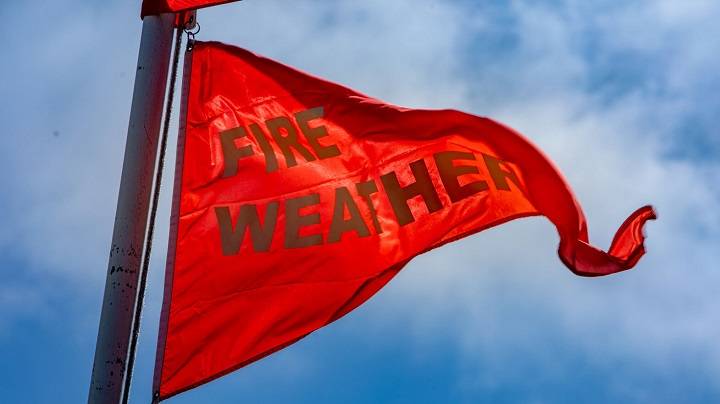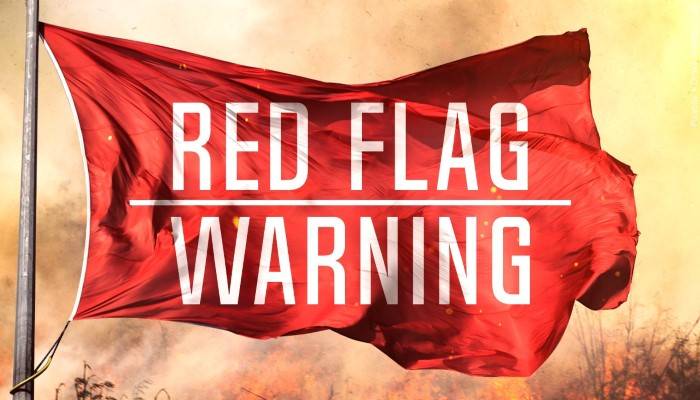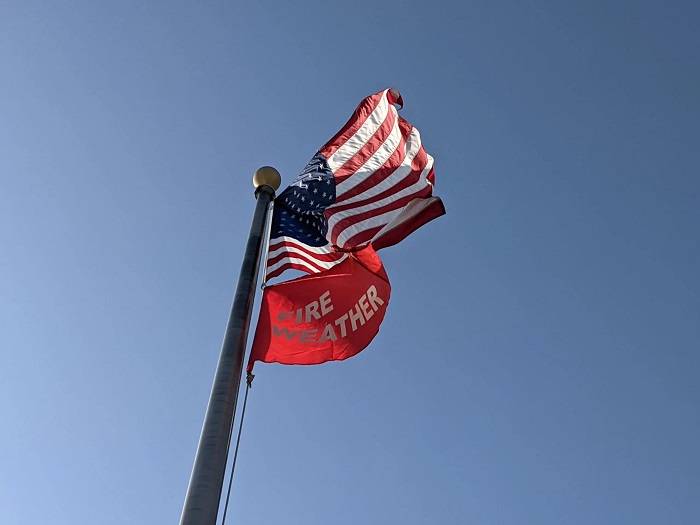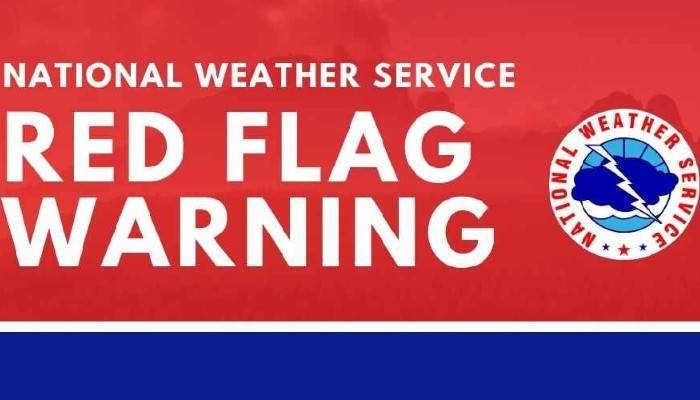Red flag warnings, often referred to as fire weather warnings, are critical alerts issued by meteorological agencies to warn the public and emergency services of conditions that significantly increase the risk of wildfires. These warnings are vital for safeguarding lives, property, and natural resources. In this comprehensive blog post, we will delve into the details of red flag warnings, their importance, the conditions that trigger them, and how individuals and communities can prepare and respond effectively.
What is a Red Flag Warning?
Definition and Purpose
A red flag warning is a forecast issued by the National Weather Service (NWS) and other meteorological agencies when conditions are favorable for the rapid spread of wildfires. The primary purpose of these warnings is to alert fire officials and the public to the heightened risk, allowing for preventive measures and increased vigilance.
History and Development
The concept of fire weather warnings has evolved over time, with significant advancements in meteorological science and fire management strategies. The term “red flag” originated in the United States and has become widely recognized as a symbol of fire danger.
Conditions Leading to Red Flag Warnings
Meteorological Factors
Several key meteorological factors contribute to the issuance of a red flag warning:
- High Winds: Strong, sustained winds can quickly spread wildfires. Winds exceeding 25 mph are a common threshold for concern.
- Low Humidity: Relative humidity below 20% significantly increases the risk of fire ignition and spread. Dry air conditions facilitate the combustion of vegetation and other fuels.
- Warm Temperatures: Elevated temperatures can dry out fuels and create favorable conditions for wildfires. Temperatures above 80°F are typically a critical factor.
- Dry Fuels: Prolonged drought or recent dry weather can lead to dry vegetation, which serves as fuel for wildfires. The moisture content of fuels is a crucial element in fire behavior predictions.
Additional Risk Factors
- Lightning: Thunderstorms that produce lightning without significant rainfall can ignite wildfires, especially in dry conditions.
- Human Activity: Activities such as outdoor burning, campfires, and use of machinery can inadvertently start wildfires, particularly under red flag conditions.
Geographical Areas Prone to Red Flag Warnings
United States
In the United States, red flag warnings are common in regions with Mediterranean climates, such as California, as well as in the Great Plains and the southwestern states. These areas frequently experience the combination of high winds, low humidity, and warm temperatures that trigger red flag warnings.
Global Perspective
Globally, regions prone to wildfires, such as parts of Australia, Southern Europe, and South Africa, also monitor and issue similar fire weather warnings. Each country has its own criteria and systems for assessing and communicating fire danger.
Issuance and Communication of Red Flag Warnings
Forecasting and Monitoring
Meteorological agencies use advanced weather models and monitoring systems to predict fire weather conditions. These models consider various meteorological parameters and historical data to assess the risk and potential impact of wildfires.
Notification Systems
When a red flag warning is issued, it is communicated through multiple channels to ensure wide dissemination:
- Weather Websites and Apps: Meteorological agencies update their websites and mobile apps with the latest warnings and forecasts.
- Social Media: Platforms like Twitter and Facebook are used to quickly spread the word about red flag warnings.
- Emergency Alert Systems: Text messages, emails, and other emergency alert systems are employed to reach residents and stakeholders.
- News Media: Television, radio, and online news outlets play a crucial role in informing the public about red flag warnings and associated precautions.
Impact of Red Flag Warnings
On Emergency Services
Red flag warnings prompt fire departments and emergency services to heighten their preparedness. This includes:
- Increased Staffing: Additional personnel may be deployed to monitor and respond to potential fires.
- Pre-positioning Resources: Firefighting equipment and resources are strategically positioned to ensure rapid response.
- Public Safety Campaigns: Efforts are intensified to educate the public about fire safety and preventive measures.
On the Public
For the general public, a red flag warning necessitates heightened awareness and caution. Key actions include:
- Avoiding Open Flames: Refraining from activities that could start a fire, such as outdoor burning, campfires, and fireworks.
- Securing Outdoor Equipment: Ensuring that machinery and vehicles are not parked on dry grass and are properly maintained to prevent sparks.
- Creating Defensible Space: Clearing vegetation and debris around homes and structures to reduce fire risk.
Case Studies of Red Flag Warnings and Wildfires
California Wildfires
California frequently experiences red flag warnings, particularly during the fall when Santa Ana winds blow hot and dry air from inland regions toward the coast. Notable cases include:
- Camp Fire (2018): One of the deadliest and most destructive wildfires in California’s history, the Camp Fire was fueled by strong winds and dry conditions. The red flag warning issued ahead of the fire helped emergency services mobilize resources quickly.
- Thomas Fire (2017): Triggered during red flag conditions, the Thomas Fire became one of California’s largest wildfires, burning over 280,000 acres.
Australian Bushfires
Australia’s hot and dry climate makes it susceptible to bushfires, with the Fire Danger Rating System used to communicate risk levels:
- Black Saturday (2009): A series of devastating fires in Victoria, Australia, occurred under extreme fire weather conditions, with red flag warnings (known locally as Code Red) indicating catastrophic danger.
- 2019-2020 Bushfire Season: Known as the “Black Summer,” this period saw widespread fires across Australia, with multiple red flag warnings issued to alert the public and emergency services.
Preparation and Response Strategies
For Individuals
Individuals can take several steps to prepare for and respond to red flag warnings:
- Stay Informed: Regularly check weather updates and heed warnings from local authorities.
- Create an Emergency Plan: Develop a family emergency plan that includes evacuation routes and communication strategies.
- Prepare an Emergency Kit: Assemble a kit with essentials such as water, food, medications, important documents, and first aid supplies.
- Defensible Space: Maintain a defensible space around your home by clearing flammable vegetation and debris.
For Communities
Communities can enhance their resilience to wildfires through collective efforts:
- Community Fire Plans: Develop and implement community fire management plans that include risk assessments, evacuation procedures, and public education campaigns.
- Firebreaks and Vegetation Management: Establish firebreaks and manage vegetation in public areas to reduce fuel loads.
- Collaborative Training: Facilitate joint training exercises for emergency services and community members to improve coordination and response capabilities.
Technological Advances in Fire Weather Forecasting
Remote Sensing and Satellite Imagery
Advancements in remote sensing and satellite technology have improved the accuracy of fire weather forecasts. Satellites can monitor real-time changes in weather conditions and vegetation moisture, providing critical data for predicting fire risk.
Machine Learning and AI
Machine learning and artificial intelligence are increasingly being used to analyze vast amounts of meteorological data. These technologies can identify patterns and predict fire weather conditions with greater precision, enhancing early warning systems.
Drones and UAVs
Unmanned aerial vehicles (UAVs), or drones, are being utilized for fire detection and monitoring. Drones equipped with infrared cameras can detect hotspots and provide real-time information to firefighting teams, aiding in swift response efforts.
Educational and Public Awareness Campaigns
Fire Safety Education
Public awareness campaigns play a crucial role in educating communities about fire safety and the importance of red flag warnings. Programs and initiatives aimed at schools, workplaces, and community groups can help instill a culture of fire awareness and preparedness.
Collaboration with Media
Collaboration with media outlets ensures that fire weather warnings reach a broad audience. Engaging with local news channels, radio stations, and online platforms can amplify the message and encourage timely action.
Community Workshops and Drills
Organizing community workshops and fire drills can enhance public understanding of red flag warnings and appropriate responses. These activities provide hands-on experience and reinforce the importance of preparedness.
Future Challenges and Opportunities
Climate Change
Climate change poses significant challenges to fire weather forecasting and management. Increasing temperatures, prolonged droughts, and shifting weather patterns are expected to intensify wildfire risks, making it essential to adapt and enhance current strategies.
Enhanced Collaboration
Enhanced collaboration between meteorological agencies, emergency services, and communities is crucial for effective wildfire management. Sharing data, resources, and best practices can lead to more coordinated and efficient responses.
Innovation and Research
Ongoing research and innovation are vital for improving fire weather prediction and response. Investing in new technologies, studying wildfire behavior, and developing advanced modeling techniques will contribute to more accurate forecasts and effective mitigation strategies.
Related Post:
Exploring “The Boy and the Heron”: Showtimes, Story, and Cultural Impact
Understanding Measurements: How Many Ounces in a Cup?
Monopoly Go Free Dice Links: Everything You Need to Know
Red flag warnings are a critical tool for preventing and mitigating the impact of wildfires. Understanding the conditions that trigger these warnings, staying informed, and taking proactive measures can significantly reduce the risk of wildfire damage. By fostering a culture of preparedness and resilience, individuals, communities, and emergency services can work together to protect lives, property, and natural resources from the devastating effects of wildfires.





